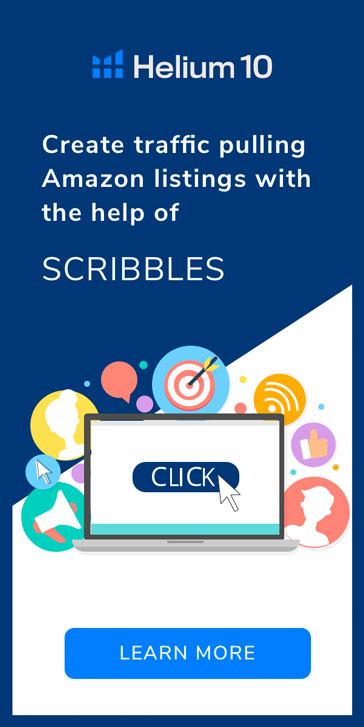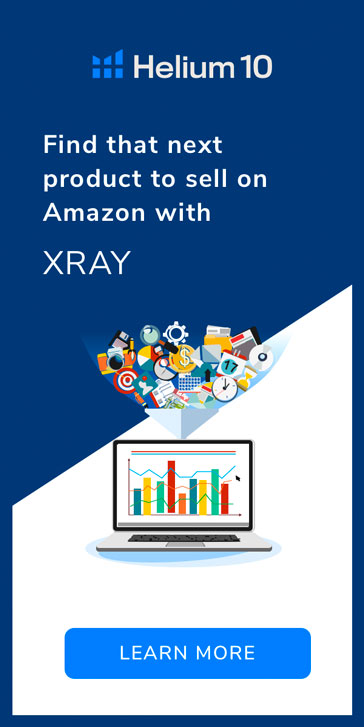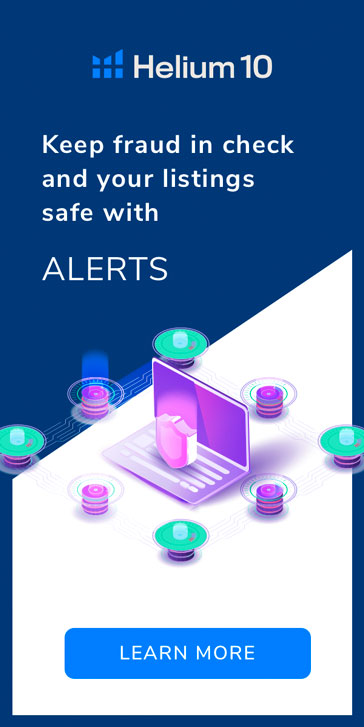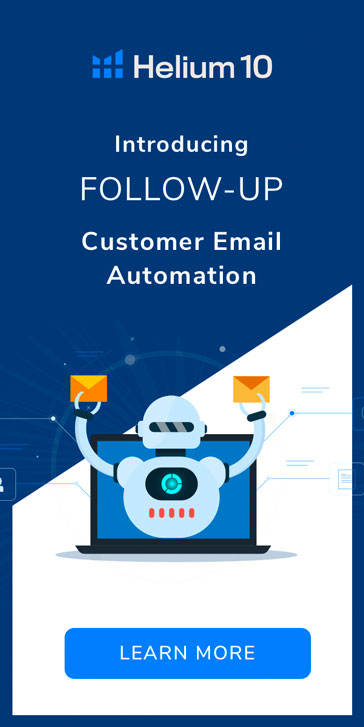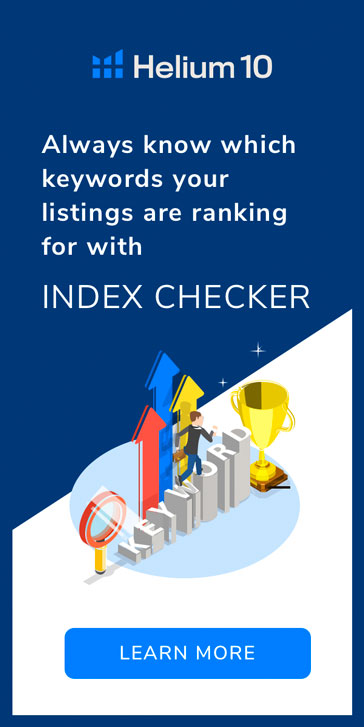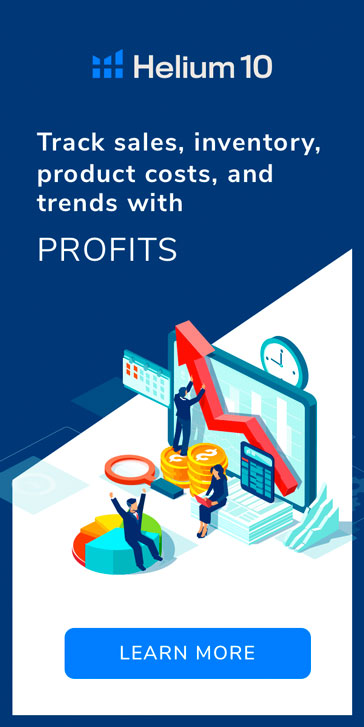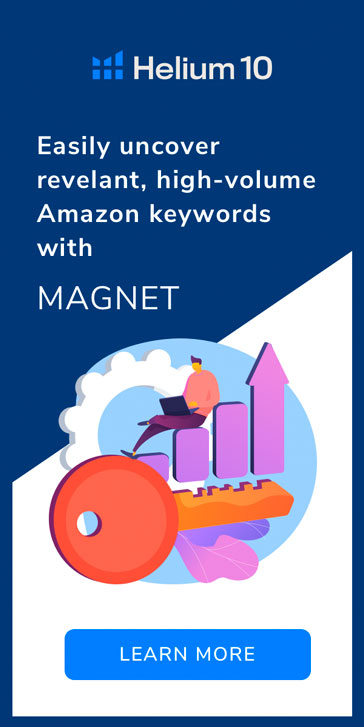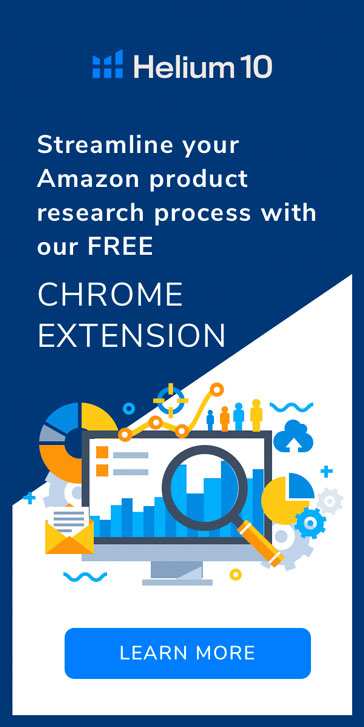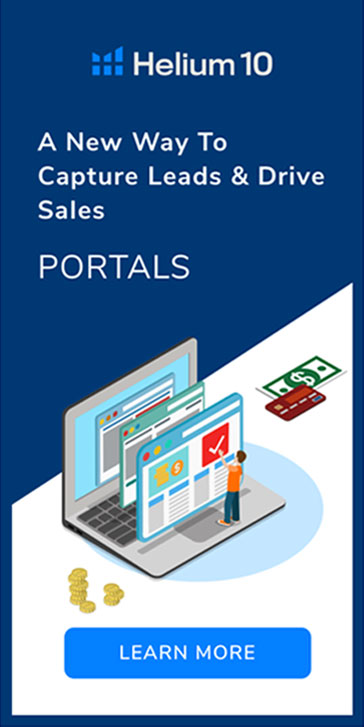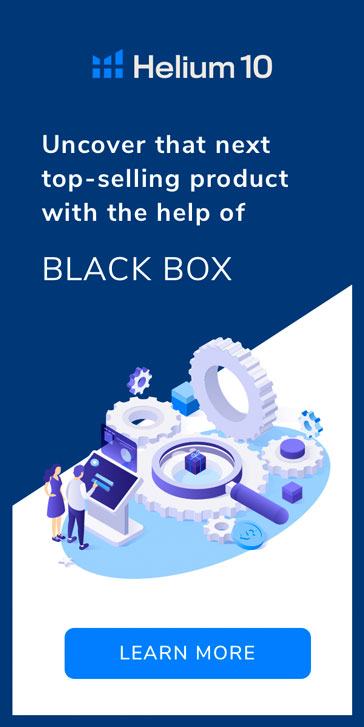Register for the Ecom Roadmap webinar with Elena Saris on Thursday September 5, 2019 at 11:00 am PST
One of the most frequent questions we, as entrepreneurs get asked is, “What do you do?” I used to answer, “I am an Amazon seller.” Then as my business grew and I was able to outsource more of my day to day tasks, a friend and I formed a company called Source in Asia where we would take Amazon sellers to Yiwu China and teach them how to source products and work with their own sourcing agents.
I began to answer that question in a new way: “I sell on Amazon and I take other sellers to China to help them sell on Amazon.”
In April 2017 someone joined our China trip who was not an Amazon seller. He was drop shipping through his own Shopify sites using Facebook ads to attract his customers. This idea intrigued me so I asked him to give our attendees a talk one evening to discuss his business model.
He revealed that he had generated over $8m in revenue his first full year online at a 30-35% profit margin. He explained that he never had to buy inventory in advance and never had to pay for inventory until his customer bought his product.
Needless to say, I was intrigued. I vowed that when I got home from that trip I was going to learn all I could about Shopify and set up my own store by the end of summer. I was not walking away from Amazon but I saw the competition was getting fiercer and the dirty tactics of black hat sellers attacking listings were getting worse. I knew I needed to diversify.
Humble Beginnings of Platform Diversification
I had a shaky start in July of 2017 but the ball started rolling in earnest at the beginning of October. That first Q4 I generated over $750K, largely with one product. The margins were nearing 35%. I realized something during those frenzied months. I had been answering the questions of “what I did” all wrong. I should have said, “I import physical products, largely from China, and I sell them online.” This simple sentence was a revelation.
My business had never been and still is not “an Amazon business.” Amazon was and is one Traffic Source. Learning about drop shipping opened many new traffic sources to me, ones that I realized would work better on a Shopify platform than on the Amazon platform. At the end of the day, opening a Shopify store added “landing pages” to my business and opened up new Traffic Sources where I could find more customers to buy the physical products I was selling.
Facebook, Google, Instagram, Pinterest, etc. are those new Traffic Sources, not new businesses. My business has expanded but it has not changed in its essence, I sell physical products online.
There is a false dichotomy out there generated largely, in my opinion, by people selling courses on one platform or the other that one must be EITHER an Amazon seller or a Shopify seller. In the past year by diversifying my traffic sources, I have discovered many ways that selling on Shopify can benefit “Amazon sellers.”
Before I delve into those, let me give a brief overview on dropshipping: In its most basic form, drop shipping involves setting up a landing page that shows off the item you are selling and gives the customer a way to pay you for that item.
Shopify is the simplest of these platforms (but others exist such as Woo Commerce and Clickfunnels to name a few). You as a seller must drive traffic to that page. Once a customer purchases the item from you, you purchase the item from a supplier and ask that supplier to send the item directly to the customer.
Dropshipping is NOT a Dirty Word
Let me also clear up the 3 most common misconceptions about drop shipping before we get into why every Amazon seller should consider diversifying their sales platforms.
1) Drop shippers only sell cheap, poor quality items from China.
Some of the most successful online sellers drop ship. Stores from Wayfair to Kylie Cosmetics all use the drop ship model. The quality, cost and type of goods
is no different than items current Amazon sellers are buying in bulk and having Amazon ship to their customers.
2) Customers have to wait one month or longer to get their items and they will return and chargeback purchases all the time.
There are several drop shippers and 3PL companies in China and the United States that are able to get items to customers within 8-15 days from China. And while we as Amazon sellers have been conditioned to believe that all customers want everything they order to be at their door the next day, the reality is that if you are transparent with your shipping times, most customers will wait 2 weeks without complaint. Furthermore, there are many USA suppliers who will drop ship to your customers. I recently found 3 new suppliers at the ASD trade show in Las Vegas. USA suppliers are just now learning of the lucrative sales numbers of many sellers and are eager to get in on the action. Items from the USA reach customers in 5-7 days generally.
3) Drop Shipping is too difficult for folks who have never built a website or placed an ad on Facebook
One must have a website and a merchant provider on that site to make a sale and one must drive traffic to that site. This is factual, but with platforms like Shopify anyone can have a fully functional website, with a merchant services provided, up and built in about a few hours. Learning to place Facebook ads, like learning to sell on Amazon is a skillset you need to develop but at the end of the day it’s very doable. Amazon sellers had to learn from scratch how to set up an account, source products, launch, rank and handle PPC to the items on that platform. Every new platform comes with some learning curve, but there are several excellent courses, free videos and mentors out there to show you the way. And like any complicated facet of selling online, there is always the option of outsourcing that aspect of the business.
There are several types of drop shipping stores. For our purposes we will discuss two of the most common “low ticket” options, ones offering items under $200.00
Churn and Burn
Many people choose to start with a general store and find items that are already selling to capitalize on a trend. This is frequently referred to as “churn and burn” – Ride the trend, make your sales, move to the next unrelated product. This is a great way to make a lot of money fast and while it may not be as simple as it was a few years back its still an excellent source of income and a great way to find niche products that you can eventually brand.
Brand Stores
Many other sellers choose a niche to begin with and spend their time building their customer base and focusing on one type of item. This is a long-term play involving more work upfront and less initial income but one that provides a sellable asset and a steady income flow down the road. Again, this is not an either/or proposition. Many top sellers have both types of store
Looking at these options you might think that as an Amazon seller I would only use and recommend Brand Stores but this is not the case. I have BOTH and I recommend BOTH options. Brand building is essential and it should be the goal of most major online sellers. However, the two types of selling are not mutually exclusive. I began with a general store, selling random products I think will do well or that I see trending online. From there, based on items I had great success with, I made 3 niche stores and I am working on branding them for the long term.
I still test a multitude of unrelated products in the general store. When I find a winner that fits into one of my niche stores I begin selling from the niche store to that niche audience. When I find a winner that does not fit into one of those I make the decision to either make a new niche store or just keep selling it in the general store until it runs its course.
Now that we have explained the drop shipping concept, rebutted the most common myths about the ills of drop shipping, and talked about the two most common types of low ticket Shopify stores let’s dive into these questions:
What are the advantages to selling on the Shopify Platform? and
Why would an Amazon seller ever want a Churn and Burn General Store?

What are the advantages to selling on Shopify for Amazon sellers?
We all know that Amazon offers TRAFFIC. There is no denying this the MAIN selling point of putting your business on the Amazon platform. You get all the eyeballs! No one decides they want an item and picks up their mobile and types into Google the name of that desired item followed by “+ Shopify”. When shopping online, most folks START with Amazon.
So, yes, Shopify sellers need to overcome that huge disadvantage as no one is coming to them looking for what they are selling when first starting out. We must drive our own traffic to our stores, but once there, those customers are OUR CUSTOMERS. This is a HUGE advantage because:
*We have their names, REAL emails, Facebook info, and phone numbers. We can email them, re-target them, send them coupons and offers, and announce new launches.
*We can get them to our Facebook page, groups and VIP clubs. We can ask Facebook to target people who LOOK LIKES them in terms of demographic information and buying behavior.
*We can use upsells, cross sells right on our sales page and follow up with them if they left items in the cart or window shopped without adding an item to the cart.
*We can show them any items we want to under the heading Frequently Bought Together.
*We can make a FLASH SALE anytime we like and completely control our pricing.
*We can ask them for reviews!
*We set the terms for when we will take a return back and how the customer will be compensated.
*We can sell to that email list any other offers we think are relevant (including our Amazon listings!)
When I first started selling on Amazon I thought it was a huge bonus that Amazon handled all my customer service. I realize now that this is one of the biggest DISADVANTAGES to being an Amazon seller. Sure, I have to handle emails and calls myself, whether on my own or through outsourcing, but having my own customer list is pure Gold. I was happy to put in the work on that when first starting out on my own and now even happier paying a team to handle that task since it means I have my own customers, my Facebook fan pages, my Facebook Groups, my EMAIL LIST, all the main assets of a REAL business that Amazon withholds from us.
Can you imagine being able to send a text to your Amazon customer 2 hours after they abandon their cart telling them to click on the link attached to get back to their cart and complete their purchases? It’s not possible on Amazon but it is on Shopify. Currently I have a product that has generated over $350K in revenue since April 15th and nearly $40K of those sales came from email or text follow up to non buying shoppers. Pure Gold.
Why would an Amazon seller ever want a Churn and Burn General Store?
I am NOT saying do not have a brand store on Shopify for your Brand. On the contrary,
if you are a true brand on Amazon, you likely already have a branded website of your own. This is a good thing.
You may use Facebook ads and other social media platforms to help promote your brand identity, announce sales and launch new items. Less frequently, you may be placing ads on social media directly to your Amazon page and fulfilling through FBA. However between the cost of advertising and the pick and pack fees of Amazon fulfillment, the margins are likely quite low with this approach and you may be hurting your Amazon conversion stats.
In the long run, it’s generally not cost effective to send cold traffic to your Amazon listing because in the Amazon ecosphere, low price is king and it costs money to acquire a customer on social media. This is not to say Facebook ads and social media are not important to your brand, its just to say there are some very good reasons to also consider the Churn and Burn model of the Shopify business even if you are a branded Amazon seller.
How Does Selling On Amazon Differ From Selling On Shopify?
In order to understand WHY a general store will help you as an online seller, let me once again digress to point out the radical and very important differences between selling on Amazon and selling on Facebook.
In the Amazon world KEYWORDS are King. Our whole goal is to be the first item customers see when they are shopping online and type a Keyword into the Amazon search bar. The important part of that last sentence is “when they are shopping online.”
People who go to Amazon are in a buying mood. They want something, they know what it is, what it looks for and an idea of how much they want to pay. Your listing just needs to be at the top of the page, look like what they want and cost about what they expect or less.
People who are scrolling through Facebook are NOT in a buying mood. They are chatting with friends, watching cat videos, posting pictures of their kids’ first day of this or that grade. We are INTERUPTING them. We are the kiosk in the mall – the sock store that has the perfect emoji socks you did not know you could not live without until you saw them in the middle of the aisle as you walked towards Nordstrom’s or the Apple store.
We want them to act on impulse. Hit BUY NOW. Don’t price compare! Don’t shop around! We want you so Wowed by our product that you STOP THE SCROLL and get out your credit card. The product must meet very specific criteria to engender that immediate impulse to purchase on the spot. Very few of the products most people sell on Amazon FBA will meet those criteria. By definition in order to get to the top of the page on Amazon we need our item to look like what people expect to see.
WHAT IS THAT?
This question is music to the ears of a Shopify seller, people will click through to find out, to see it in action, to be entertained! That same question is the kiss of death to the Amazon seller. People will scroll past it till they see something that looks like what they think the item the want looks like.
Here are the 3 ways opening a general store or what I call a “wide niche” stores can help you as an Amazon seller.
1) Product Research
When I test a new product on Amazon I expect to invest between $3-5K at the very low end. Product research time, reliable supplier research time, designing the product and the packaging, making inserts, ordering the initial batch, launching the product, promoting the product and shipping it into Amazon.
When I test a product on Shopify using Facebook ads, I can get most of the data I need for about $250-500 on average. In its very basic form, we can place an ad called a “Post Engagement Ad” showing off the product and asking Facebook to show the ad to folks who would likely engage with an ad of that type. From the comments, likes and shares we get some idea of what folks think of the item. We can then place a website conversion ad, asking Facebook to show the ad to people who would be inclined to buy the item. We let that run 3-7 days and we analyze the data to see if we could be profitable.
If you are thinking of a new twist on your current Amazon item, (color, style, improvement) this is a great way to gage its reception without breaking the bank.
2) Retargeting
If you have an established brand and want to get an email list or a more dedicated following to your brand page, find an item that looks so cool or does something so fun or different that it would stop the scroll and still is in your niche. You can sell that item and retarget those customers to your Amazon listing or fan page using Facebook ads, SMS or email marketing.
Here is an example: You have a kitchen brand and sell things primarily related to cooking. There are many stores that sell traditional kitchen items like Target on the low end or Williams Sonoma on the high end. But every once in a while people who love to cook are shopping at a store like Bed, Bath and Beyond, or Brookstone and suddenly they see a funky new kitchen item they buy on impulse. Let’s say you found a funky new garlic press to sell; its round and you rock the bottom like a boat over a clove of garlic to press it. Buyers seeing this online won’t go out to Target or Williams Sonoma or over to Amazon to see if those stores carry the item. They buy it on impulse because it catches their attention. The video of the person using it was cool and its priced low enough to be an impulse buy.
Aliexpress is filled with funky kitchen items that may not fit your Amazon brand to the tee and in fact might stand out and look weird in your Amazon storefront among the traditional items you carry. But that funky kitchen item appeals to your target audience. Selling this item on your Shopify store gets you a list of BUYERS who you know love to cook and are willing to spend money on cooking paraphernalia. If the item meets enough of the Stop The Scroll criteria, you could also seriously cash in while you build that list!
3) Cash Flow
My best year on Amazon so far, I turned my money 5 times. Amazon paid me reliably every two weeks. Getting ready for Q4 meant at least tripling my inventory orders so I would stay in stock through the end of the year. One could have $50K-$500K or more out of pocket from late August until late October depending on your lead times, suppliers, net terms etc. It was worth it in the end when you saw your sales totals but it can mean lean living for many sellers in late Summer, early Fall.
With the drop-shipping model, we do not buy the item until the customer pays for it. So the customer orders on a Monday, pays by credit card or PayPal. We see the money deposited in our store right away. We order the item from the supplier who then begins the process of packing and shipping it to the customer (this is all automated by the way). On Wednesday, a mere TWO DAYS later we get that money deposited into our bank account from Shopify or PayPal.
Many times people hear of Shopify sellers having $100K sales day and learn that this involved $30K of ad spend. They then conclude that Shopify is not for them because they do not have $30K to spend every day. But in reality that $30K is a credit card charge that will be paid back well before any interest accrues and will make them millions of reward miles over time as well.
When trying to capitalize on a trending product, whether or not its in your niche to be used later for retargeting, Shopify sellers will look for tell tale signs of what is trending up or what they believe will stop the scroll. It is not unusual at all for a seller to put up 10 items, have 9 fail and find one that quickly generates $1K/day. Even at low 20% margins, that is $6000/month in profits. Could $6K a month help Amazon sellers fund their next test product? Pay for some serious PPC marketing? Help defray the cost of inventory upticks or giveaways?
The more experience you have the more likely your hits will come more frequently. If scaled properly that $1K/day item at the beginning could go on to generate $5K/day and even $50k per day if the item is right and the audience is large enough. As I stated above, one of my niche store items has generated over $350K since mid-April, another has an item that is growing fast, having generated over $10K since its launch 9 days ago and the third has a slower but steadily growing item launched April 5th generating nearly $2K in the last 12days.
I expect the latter two will hit $50K/month and $30K/month in September alone. The money comes quickly when it comes on Shopify. It was months between when I decided to sell something on Amazon and my first deposit from Amazon. With Shopify it’s a matter of days. Yesterday my business partner hit $1 million of sales in 48 days on his own store. He did this with only 2 products.
Selling On Amazon Isn’t Always a Basket of Roses

Amazon is an amazing opportunity and she is also a fickle beast. When I got hit by my first fake counterfeit complaint and lost my ability to sell all of Q4 while it was sorted out, I thought to myself, “I diversify my investments, why am I not diversifying my sales platforms”? I delayed because I thought it was too complicated. I did not understand the potential and I was wary of the drop shipping notion because I listened to naysayers and gurus dissing the idea to promote their own courses rather than investigating it myself.
The chance encounter in China opened my eyes to a whole new world. I still hear the naysayers, even when I speak on stage with them and share my numbers, with the audience, me, a newbie in the space, showing them over $1m in sales in about 9 months. These false prophets still have the audacity to get on that stage immediately after me and put up their first slide in the deck saying that dropshipping on Shopify is dead. Sorry to burst that sales pitch for your high-ticket course, but dropshipping on Shopify is alive and well and we prove that every day.
Can you make $1m in fewer than 50 days like my business partner? Likely not. But can you scale a new store to $10K, $20K, $30K/month in income in just a couple months? Yes, this is infinitely doable if you are committed.
Much like Amazon in late 2014, the window for the easy score is still open, the landscape is changing for sure but there is, in my opinion, another 2 years to get in on this in its present state of growth.
In short, “There’s gold in them thar hills!” You don’t need to mortgage your house, close your Amazon business and dive in head first, but don’t close your eyes and mind to this opportunity and definitely don’t miss out on using Shopify to help your Amazon business and your BRAND succeed and grow. After all, since our business truly is “importing physical products, largely from China, and selling them online” why wouldn’t we want to reach as many people on as many platforms as possible?
Elena Saris is a former criminal defense attorney who has done multiple 7 figures in eCommerce on both the Amazon and Shopify platforms. She is the co-founder of Ecom Roadmap which helps teach online sellers how to sell on Shopify using Facebook Ads. To find out how she helps Amazon sellers, click here.
Original post from On The Ecommerce Roadmap Amazon May Just Be a Detour – Helium 10












